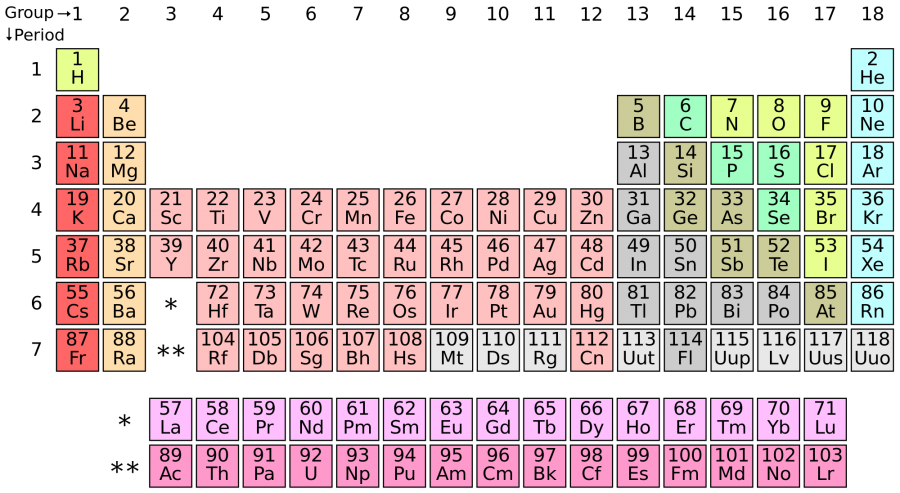Periodic progress for chemistry
Apologies to, or perhaps good news for, any current or incoming chemistry students, as they’re going to have to become acquainted with not one, but four newly added elements to the periodic table.
On December 30, 2015, the International Union of Pure and Applied Chemistry officially announced that four new elements will be added to the all so familiar periodic table. Science labs from the United States, Russia, and Japan have all been credited for the discovery of the elements 113, 115, 117, and 118. The addition of these elements not only finished the task of filling in the seventh row on the periodic table, but also ensured that chemistry teachers across the world will have to invest in more up to date textbooks and posters.
Ryoji Noyori, team member in Japan and former president of Riken, the institute which helped discover element 113, said, “The achievement is of greater value to a scientist than an Olympic gold medal.”
The four elements accepted onto the table are all super heavy metals which are highly unstable, and exist only for a fraction of a second. These elements were created through the process of firing ion beams at heavy metal targets. The Japanese group responsible for discovering element 113 reportedly had already created their element back in 2004, yet it was dismissed due to the element’s instability at the time. The group however repeated their process and came up with substantial, more stable evidence in 2012.
Kosuke Morita, the lead researcher of the Japanese research group at Riken, said, “For over seven years we continued to search for data conclusively identifying element 113, but we just never saw another event. I was not prepared to give up, however, as I believed that one day, if we persevered, luck would fall upon us again.”
On the other corners of the planet, however, researchers in America and Russia who were hard at a similar task succeeded in the discovery of elements 115, 117, and 118. The Lawrence Livermore National Laboratory and Oak Ridge National Laboratory in the US, along with the Joint Institute for Nuclear Research in Russia are credited with having discovered these elements, element 118 in particular having been reported back in 2006 through the Lawrence Livermore – Joint Institute for Nuclear Research.
Lynn Soby, executive director of the International Union of Pure and Applied Chemistry, stated, “All of the laboratories involved here have made major progress since their initial claims. And here we are: all four have substantiated their claims.”
Of course, simply the titles “Element 113/115/etc.” aren’t permanent names for the newly added elements. The elements have been given temporary names for the elements, being ununtrium, ununpentium, ununseptium, and ununoctium. Official names will be given to these four new additions soon; however they will take at least five months before the International Union of Pure and Applied Chemistry approves and new titles.
When asked about his opinion on how the addition of new elements to the periodic table may affect the chemistry courses provided at GHS, Junior Shane Alcroft said, “While the discovery and addition of new elements is a great step towards further discoveries in the field of chemistry, it most likely won’t affect much in regards to chemistry classes at Geneva.”
Simply the addition of a tile onto Mendeleev’s periodic table is a huge advancement in the sciences, and now that the entire seventh row of elements has been completed, researchers across the globe may now look forward in search for elements 119 and beyond.

